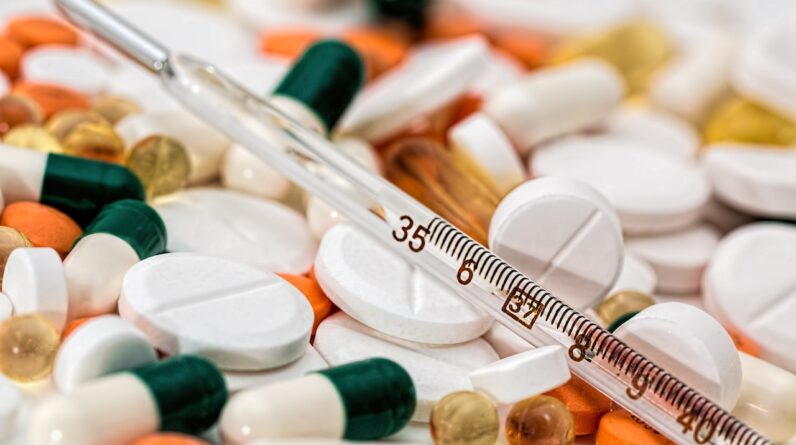
Understanding Chest Fat
Types of Chest Fat
Chest fat can be categorized into two types: subcutaneous and visceral. Subcutaneous fat is the layer that sits just beneath your skin, while visceral fat is the deeper fat that surrounds your organs. It’s important to understand the difference as it plays a significant role in the strategies you’ll implement to lose chest fat.
Reasons for Chest Fat Accumulation
Chest fat accumulates due to various reasons, including genetic factors, unhealthy lifestyle choices, or hormonal imbalances. Often, a diet high in fats and sugars, combined with a lack of physical activity, leads to an overall increase in body fat, including the chest area.
The Science Behind Fat Loss
The Role of Diet
In the quest to lose chest fat, diet plays a pivotal role. Consuming more calories than you burn leads to fat accumulation. Thus, creating a calorie deficit is crucial in shedding those extra pounds.
The Importance of Exercise
While diet is essential, it’s only half the equation. Regular exercise helps burn calories, build muscle, and boost metabolism, all of which contribute to fat loss.
Effective Strategies to Lose Chest Fat
Adopting a Balanced Diet
Foods to Include
A balanced diet rich in lean proteins, whole grains, fruits, vegetables, and healthy fats is key. These foods not only provide the nutrients your body needs but also help keep you feeling full, reducing the likelihood of overeating.
Foods to Avoid
Avoid processed foods, sugary drinks, and unhealthy snacks as they contribute to calorie surplus and fat accumulation.
Incorporating Exercise into Your Routine
Cardiovascular Exercises
Cardio exercises, such as running, swimming, or cycling, can help you burn calories and shed fat.
Strength Training Exercises
Incorporating strength training, focusing on chest exercises like push-ups and chest presses, can help tone the chest muscles and give your chest a firmer appearance as you lose fat.
The Role of Consistency and Patience
Remember, losing chest fat isn’t an overnight process. Consistency in maintaining a healthy diet and regular exercise, coupled with patience, is the key to long-term success.
Dealing with Gynecomastia
When to Seek Medical Advice
Sometimes, enlarged male breasts may be due to a condition called gynecomastia, which is caused by hormonal imbalances. If you’re struggling to lose chest fat despite consistent efforts, it may be wise to seek medical advice.
In Summary
Losing chest fat requires a comprehensive approach that includes a balanced diet, regular exercise, and consistency. While you can’t specifically target chest fat for loss, you can work on reducing overall body fat, and the chest fat will gradually decrease too. It’s also important to remember that patience is a virtue in this journey. Changes won’t happen overnight, but with consistent effort, you’ll start to see results.
Frequently Asked Questions
- Does strength training help in losing chest fat? Yes, strength training, especially exercises targeting the chest muscles, can help in toning the chest area, giving it a more defined appearance as you lose fat.
- Can I lose chest fat without surgery? Yes, adopting a healthy lifestyle that includes a balanced diet and regular exercise can help lose chest fat. However, if the enlarged chest is due to gynecomastia, you may need to consult a doctor for further advice.
- Does diet play a role in losing chest fat? Absolutely! A balanced diet that creates a calorie deficit is crucial in losing body fat, including chest fat.
- How long does it take to lose chest fat? It varies from person to person and depends on factors such as the amount of fat, diet, exercise routine, and consistency. Remember, it’s a gradual process that requires patience.
- Can hormonal imbalances lead to chest fat accumulation? Yes, certain hormonal imbalances, such as high estrogen levels in men, can lead to a condition called gynecomastia that results in increased chest fat.
- Do genetics play a role in chest fat? Yes, genetics can influence where your body stores fat, including the chest area. However, lifestyle factors such as diet and exercise also have a significant impact and can help in reducing chest fat.
- Why is my chest fat not reducing even after exercising? It’s important to remember that spot reduction, or losing fat from a specific area, is a myth. When you exercise, you lose overall body fat. It might take some time before you start noticing changes in your chest area. Consistency is key.
- Can stress contribute to chest fat? Yes, chronic stress can lead to weight gain, including chest fat. Stress triggers the release of the hormone cortisol, which can lead to increased appetite and fat storage.
- Is surgery the only option for dealing with gynecomastia? Not necessarily. In some cases, gynecomastia resolves on its own. However, if it persists, medical treatments such as hormone therapy or surgery might be considered. It’s important to consult a healthcare provider for proper diagnosis and treatment.
- Can women follow these same tips to lose chest fat? Yes, most of these tips – such as adopting a balanced diet and regular exercise – apply to everyone, regardless of gender. However, women should also consider factors like hormonal changes and breast health. As always, it’s best to consult with a healthcare provider.
Remember, while this article provides general advice on losing chest fat, everyone’s body responds differently to diet and exercise. It’s always best to consult with a healthcare professional or a certified personal trainer to create a plan that’s right for you.







